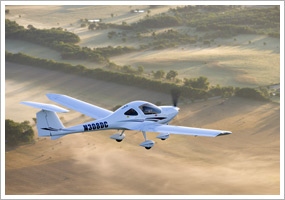Custom content for the Nov. 19, 2010, issue of 'AOPA ePilot' e-newsletter
| The following stories from the Nov. 19, 2010, edition of AOPA ePilot were provided to AOPA members who expressed an interest in the particular subject areas. Any AOPA member can receive information tailored to their areas of interest by updating their preferences online |
training tipsThe ‘pre-planned’ cross-country It used to be that an applicant for a private pilot certificate would show up for the flight test and be instructed on the spot by the designated examiner to plan a cross-country flight to an airport of the examiner’s choosing. With the clock ticking, the student would sit down to plan the flight—not always under ideal conditions—and the checkride would proceed from there. That’s not how it’s done anymore. Cross-country planning for the practical test is a homework assignment for you. Reviewing it is part of the examiner’s required plan of action for conducting your checkride. The first of nine objectives of Task D, Area of Operation: Preflight Preparation, in the Private Pilot Practical Test Standards is for the examiner to ascertain that the student “exhibits knowledge of the elements related to cross-country flight planning by presenting and explaining a pre-planned VFR cross country flight, as previously assigned by the examiner. On the day of the practical test, the final flight plan shall be to the first fuel stop, based on maximum allowable passengers, baggage, and/or cargo loads using real-time weather.” (Emphasis added.) This process suggests a way to invest some of the required three hours of practical test preparation you must log with your instructor “within the preceding two calendar months” of the flight test: Become familiar with the cross-country route, and check out airports that might become possible choices for diversion. This would also be a good time to review these interactive quizzes on cross-country subjects on the Flight Training website. While awaiting flight test day, don’t slip up and let your charts or flight publications expire. Order replacements early. A fringe benefit of getting your “previously assigned” cross-country task in advance is that it gives you an opportunity for some early contact with your examiner. Most will try to set you at ease about the upcoming test. training productsDamien Delgaizo’s ‘Tailwheel: 201, Beyond the Basics’In his first DVD, Tailwheel: 101, tailwheel instructor Damien Delgaizo used ground school and in-flight footage to illustrate proper conventional-gear takeoffs and landings. In his follow-up, Tailwheel: 201, Beyond the Basics, Delgaizo delves into short-field operations, advanced slips, and off-airport operations. The DVD is available for $39.95 from Pilotmall.com.
Note: Products listed have not been evaluated by ePilot editors unless otherwise noted. AOPA assumes no responsibility for products or services listed or for claims or actions by manufacturers or vendors. final exam
Question: As a student pilot, once I solo, can I carry passengers?
Answer: Absolutely not. This is something your flight instructor should talk with you about, certainly before you solo. The general limitations for student pilots are spelled out in Federal Aviation Regulation Part 61.89. In addition to not carrying passengers, a student pilot also cannot act as pilot in command of an aircraft that is carrying property for compensation or hire. If you are close to soloing, you are already closing in on that coveted private pilot certificate. It won’t be long before you will be able to take all your friends and family flying with you. For more information on student pilot issues, read the FAA’s Student Pilot Guide.
Got a question for our technical services staff? E-mail [email protected] or call the Pilot Information Center, 800/872-2672. Don’t forget the online archive of “Final Exam” questions and answers, searchable by keyword or topic. |
 Doing your basic cross-country planning well in advance of the flight is a best practice for pilots. Free from the press of time, you can spread out your charts, plot possible courses, and look over terrain, airspace, and obstructions. Radio frequencies, visual checkpoints, and runway lengths and bearings can be researched and reviewed. You can inspect photographic images of the airport and surrounding area in
Doing your basic cross-country planning well in advance of the flight is a best practice for pilots. Free from the press of time, you can spread out your charts, plot possible courses, and look over terrain, airspace, and obstructions. Radio frequencies, visual checkpoints, and runway lengths and bearings can be researched and reviewed. You can inspect photographic images of the airport and surrounding area in 
